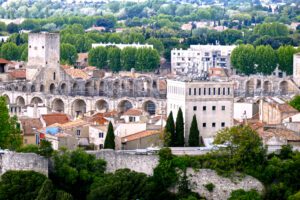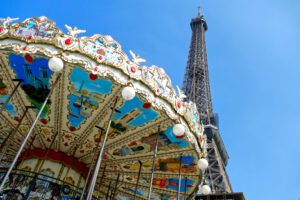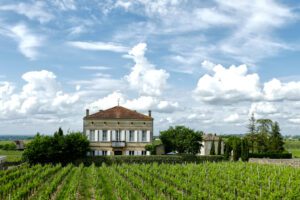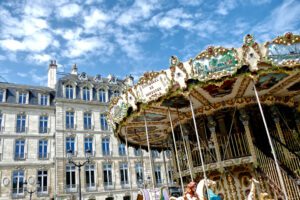Already Vincent van Gogh knew it: Arles is one of the most worth-seeing cities in the French Provence region. In 1888, the warm light attracted Vincent to the city where he then created some of his most famous paintings.
Other travellers are attracted to Arles by the numerous relics of Roman antiquity and evidence of the Middle Ages.
Personally, I always appreciate the mix: Something old, something new, something borrowed, something blue. Add some delicious food and a glass of good wine: Life in Arles is a feast for all the senses.
In this post, I have summarized for you what you definitely should not miss, even if you only come to Arles for one day.
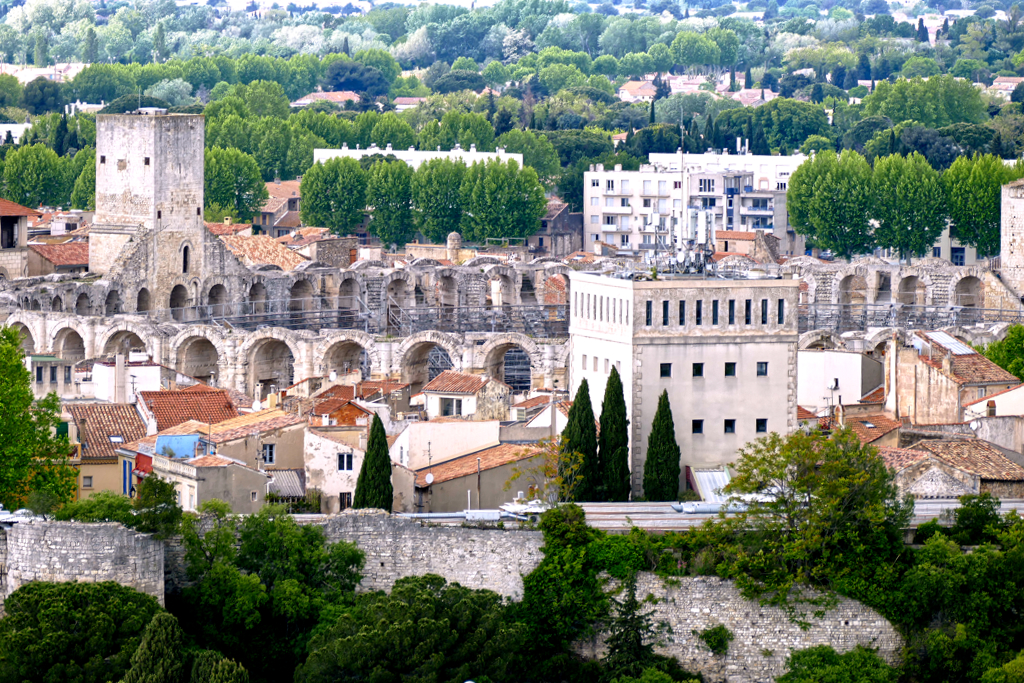
Arles – a Picture-Perfect City
Arles is very idyllically located on the river Rhône. This privileged location bedazzled already the ancient Romans, hence, they made it a provincial capital. This is why Arles has the largest number of Roman monuments – after Rome, of course. Arenas and Cryptoporticos date back to the 1st century BC. In the 4th century, another heyday brought Arles iconic landmarks such as the Constantine Baths and the necropolis of Alyscamps. Also, to this date, theater plays, concerts, and even bullfights are staged at the city’s amazing Roman theaters.
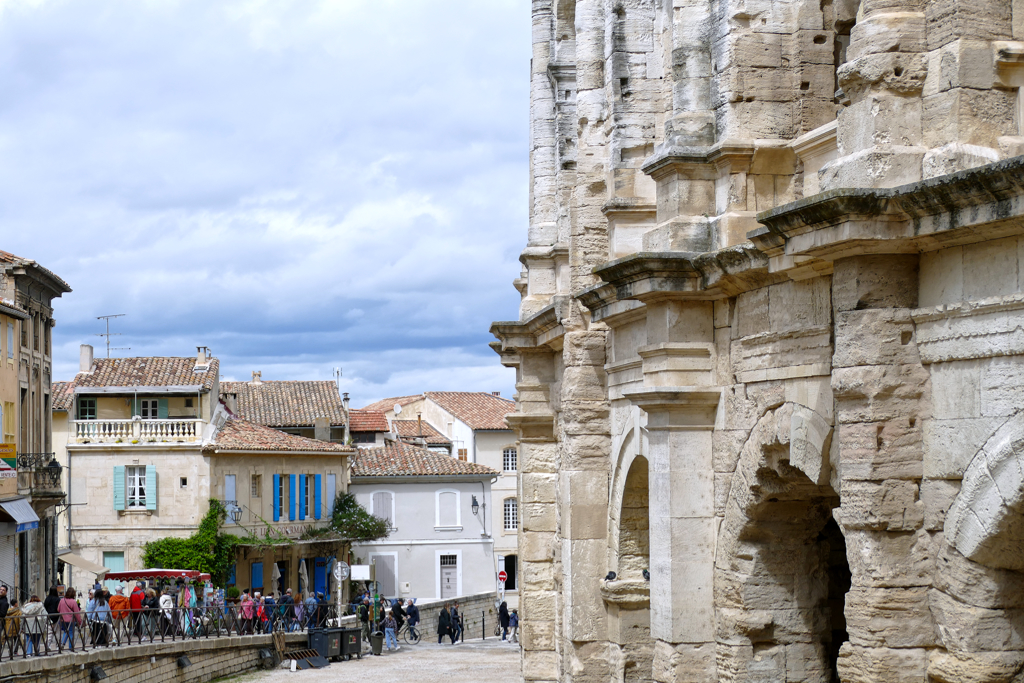
Much later, namely, in the 11th and 12th centuries, Arles became one of the most important cities in the Mediterranean world. The city was Christianized early on and became an essential stop on the Way of St. James. Within the mighty city walls stands the former Saint Trophime Cathedral with the conjoined monastery. Also, the famous Montmajour Abbey is close to the city center. Both monuments are momentous examples of Provençal Romanesque architecture.
Vincent And I
Finally, in the 19th century, one of the greatest painters of all time lived in Arles. As is well known, Vincent van Gogh was not particularly respected as an artist during his lifetime, and the residents of Arles in particular had strong misgivings about their new neighbor. Therefore, it was only much later that the city began to boast about its now-celebrated guest.
Van Gogh created around 300 works during his stay in Arles, including his most famous ones such as The Starry Night, Café Terrace at Night, Bridge of Langlois, as well as various paintings of his Bedroom.
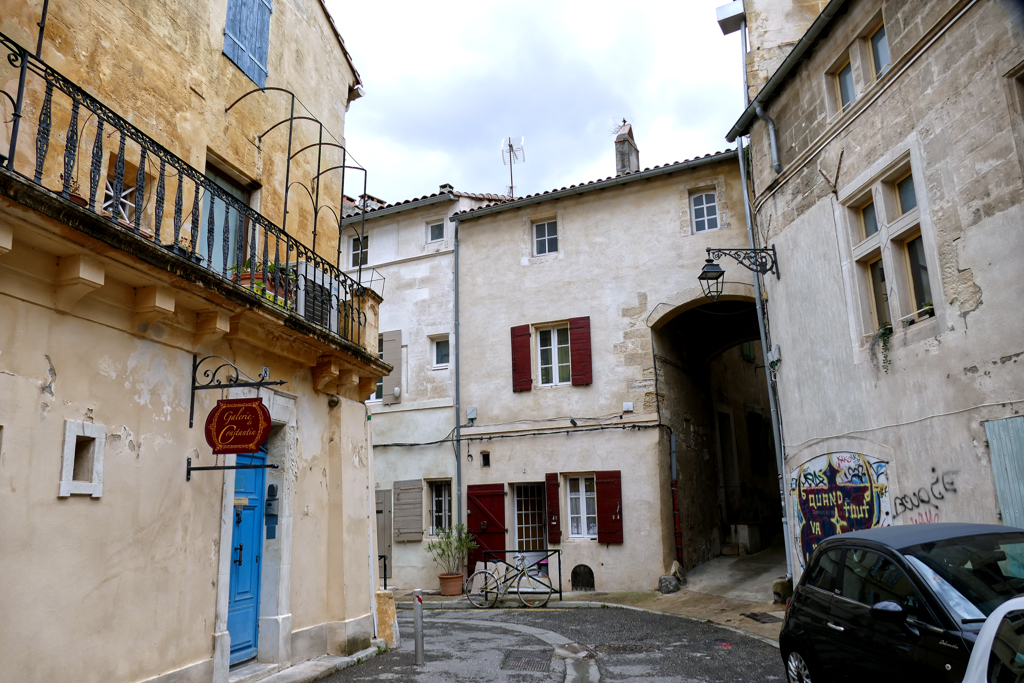
As I said above, the artist came to Arles in 1888 for the warm light illuminating the city supposedly for almost 3,300 hours every year.
Let There be Light
In that respect, Vincent was a lucky dog because when I arrived in Arles, the sky greeted me with dark grey clouds. But as we’ve learned from another grand painter, namely J. M. W. Turner, dramatic cloud formations can be at least as picturesque as sunshine’n’blue skies.
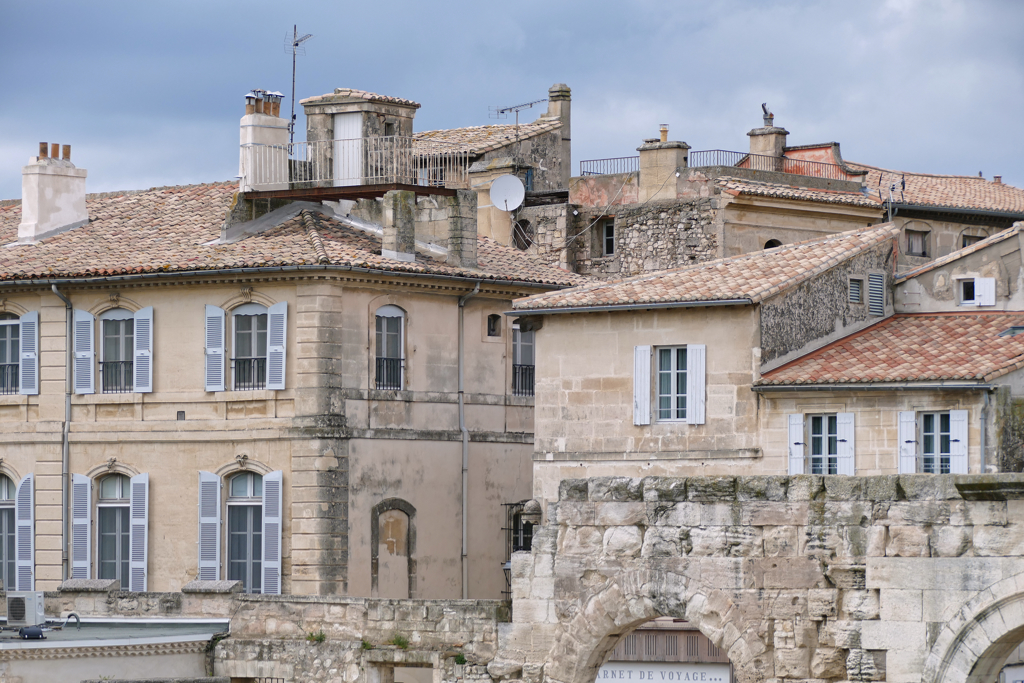
However, apart from the unfavorable weather conditions, I share Vincent’s love for Arles after having spent only one day in the city.
Given that Arles is home to only a bit over 50,000 inhabitants, one might expect a serene, maybe even a bit sleepy provincial town.
Well, one is so wrong!
Arles might not be large but it has at least as many landmarks, museums, and other amazing places as many international metropolises.
I had just one day in Arles on my railroad trip through the Provence. That’s why I limit myself in this guide to only presenting the places you absolutely shouldn’t miss.
And believe me, there are quite a few of them.
Do As the Romans Did
Arles is one of the most worth-seeing cities in Provence. The old town center in particular is criss-crossed by charming streets lined with picturesque houses. Everything is pretty and cute and it’s completely okay if you just go with the flow, as you stroll from café to café, celebrating sweet idleness.
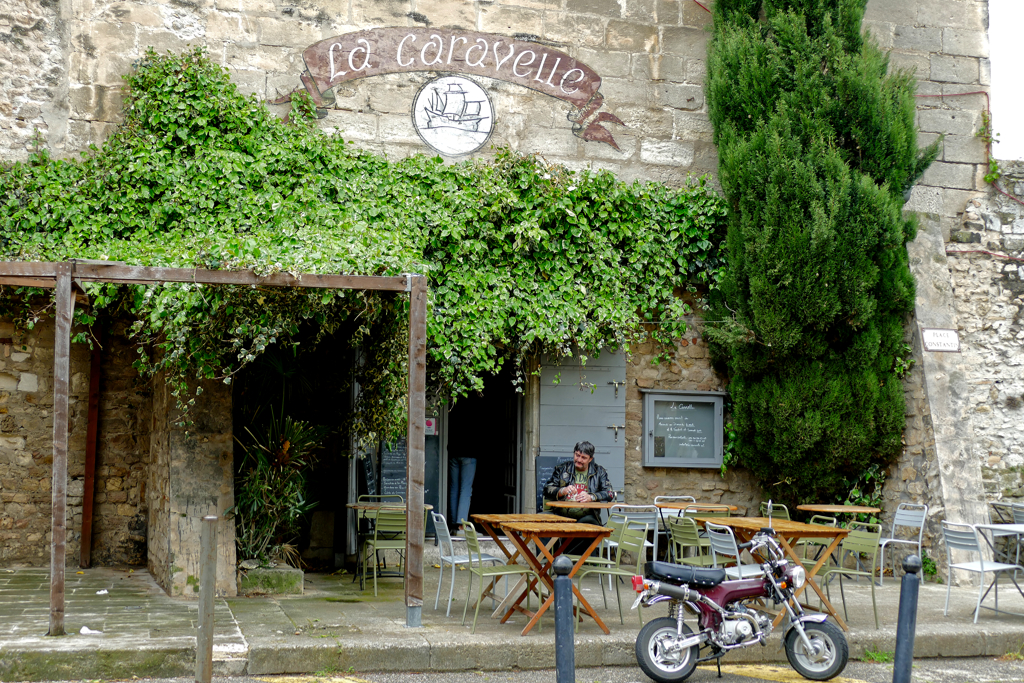
One of the most beautiful walks and one of the best shopping opportunities for some regional souvenirs is certainly a visit to the Saturday market. It stretches south of the old town along Boulevard Georges Clémenceau all the way to Boulevard Emile Combes. This market is rightly considered one of the most beautiful in Provence and, with a length of two kilometers, is certainly the largest one in the entire region. Here you will find everything your heart or at least your palate desires.

And despite immersing yourself in the proverbial French savoir-vivre, hence, the ability to live life to the fullest, you shouldn’t forget that you are surrounded by grand history and pay tribute and a visit to at least some of the glorious landmarks.
In 1981, UNESCO declared seven of the city’s ancient monuments a World Heritage Site under the generic term Roman and Romanesque Monuments of Arles.
Nevertheless, please note that sadly, all the ancient monuments are difficult or impossible to access for people with reduced mobility.
Amphitheater And Roman Theater
Vincent was not only mesmerized by the Provence’s warm light. He was also impressed by the structures the Romans had left behind. The most prominent one is the Amphitheater. It stands on a hill and originally consisted of three floors with 60 arcades each. It is slightly newer than the Colosseum in Rome but only about half the size. Nevertheless, it still offered space to around 25,000 spectators.
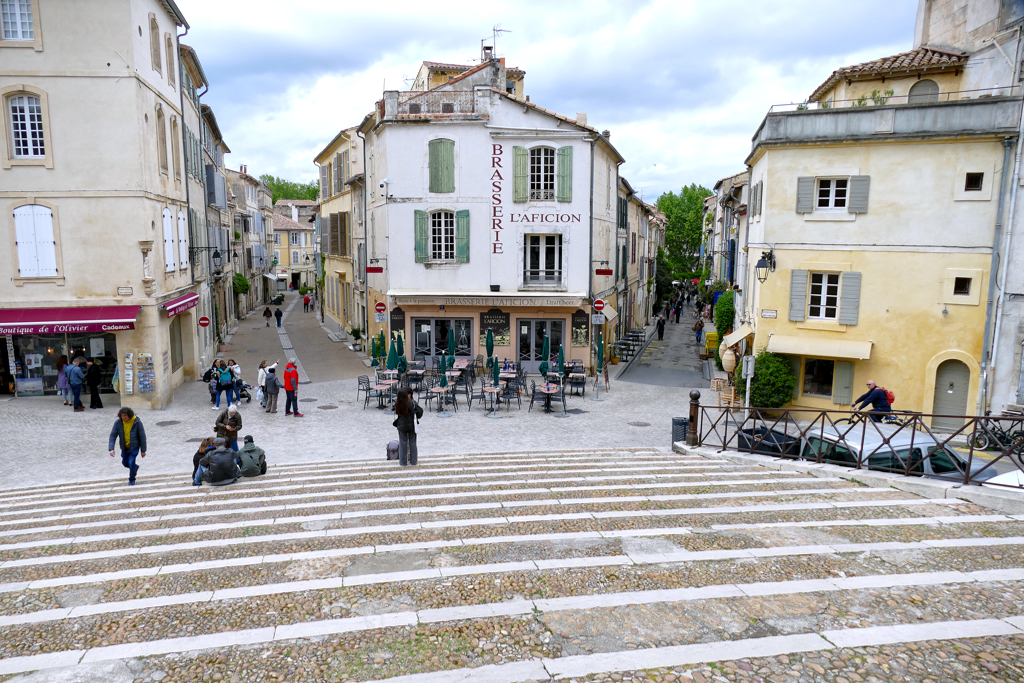
To this date, it serves as a place for bullfighting, which is actually only legal in the south of France. While I find this bloody tradition as questionable as you do, it should not go unmentioned that illustrious spectators such as Pablo Picasso and Jean Cocteau have attended bullfights in the Amphitheater of Arles. However, there are also bull games taking place, the so-called Courses Camarguaises, which are unique to the Provence region and, most importantly, cruelty-free.
Picasso not only visited the Amphitheater, he also painted the venue. Obviously, Vincent van Gogh also immortalized the arena in his painting Les Arènes.
To the south and almost adjacent to the Amphitheater is the Roman Theater of Arles.

It was built under the aegis of Emperor Augustus around 25 BC. Today, performances such as theater plays and concerts take place here from spring to the end of summer.
The Amphitheater can be visited every day between 9 a.m. and 7 p.m. for a general entrance fee of 8 €uros. Depending on the season, the Roman Theater opens either at 9 a.m. or at 10 a.m. and closes at 5 p.m. respectively at 6 p.m. The general entrance fee is 6 €uros, and there is a lunch break between noon and 2 p.m.
Trivia
The famous Venus of Arles, which is now in the Louvre Museum in Paris, was found on the property in 1651.
Roman Forum | Cryptoporticus | Thermae of Constantine
Other components of the Roman and Romanesque Monuments of Arles are the former Roman Forum and a Cryptoporticus, hence, an underground archway. They are located west of the theaters. At the southeast corner of the square is Le Café de Nuit, the terraced café which can be seen in one of Vincent’s most famous paintings. For convenience, it was eventually named the Café van Gogh, but it is now permanently closed. But don’t worry, there are tons of other bars and restaurants in the square.
To the north of the Place du Forum, near the banks of the river Rhône, are the Thermae of Constantine, another wonderful example of the grandeur of ancient Roman architecture.
The visible remains are the caldarium with suspended heating floors as well as three pools.
For an entrance fee of 5 €uros, the Cryptoporticus is open for tourist visits every day from 9 a.m. to 6 p.m. while the Constantine Baths are open only from 10.30 a.m. to 4.30 p.m. and cost the same.
Alyscamps
On the southeastern edge of the city center, you will find the necropolis of Alyscamps. It was initially pagan and later became Christian. Apart from wealthy citizens of ancient Arles, Saint Trophimus, the city’s first bishop, and Saint Gensius were also buried there. Saint Gensius was a notary who refused to confirm death sentences against Christians. For this, he himself was beheaded under the Roman Emperor Maximian.
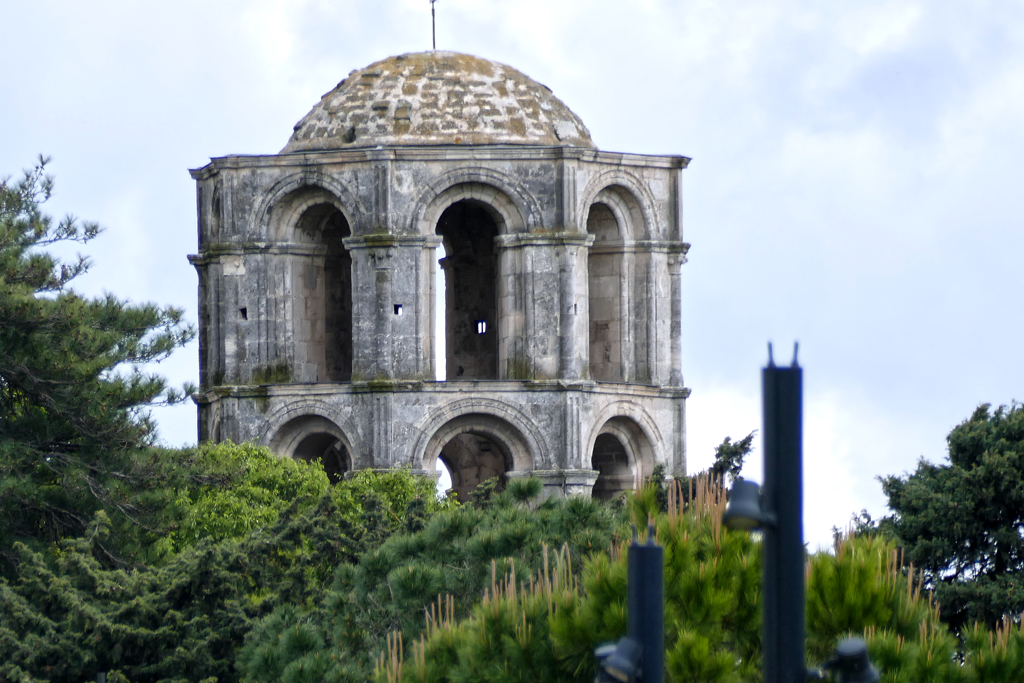
Amazingly, Alyscamps was the main graveyard of Arles for over 1,500 years. During the 15th and 16th centuries, the burial site of so many wealthy people attracted looters who systematically plundered the graves.
In 1888, Vincent van Gogh and Paul Gaugin painted together in Alyscamps for the first time. As is well known, van Gogh often created several paintings of the same motif. He painted Les Alyscamps four times.
You can visit Alyscamps every day from 9 a.m. to 6.30 p.m. The general entrance fee is 5 €uros.
Saint Trophime Cathedral
An important part of the Roman and Romanesque Monuments of Arles is the famous Saint Trophime Cathedral. It was named after Trophimus, the first bishop of Arles. In 1180, the former church of the Benedictine abbey was completed on the walls of a Carolingian building from the 9th century. However, the nave, tower, and façade were built in the Romanesque style.
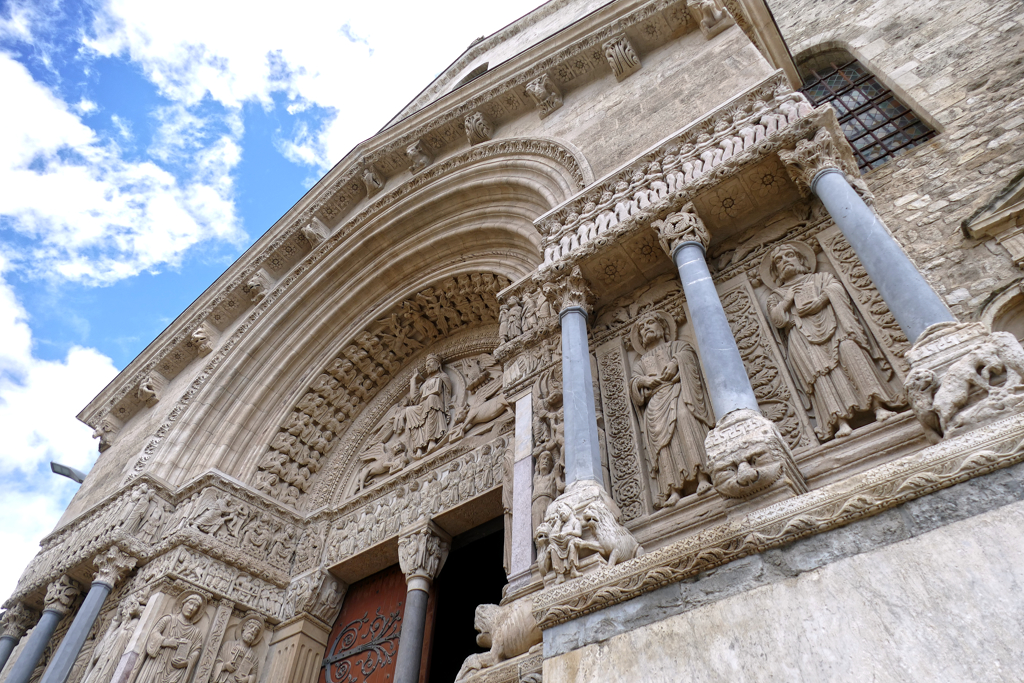
It was not until 1190 that the magnificent entrance portal on the west façade was added. With its tympanum, which shows Christ as a Judge of the World, it is considered the most important work of art of Provençal High Romanesque.
In 1178 the cathedral was the coronation site of Frederick I, who was known as Barbarossa. To this day it is the most important sacred building in the city. Since 1152, after several reburials, the bones of Saint Trophimus have been resting there again.
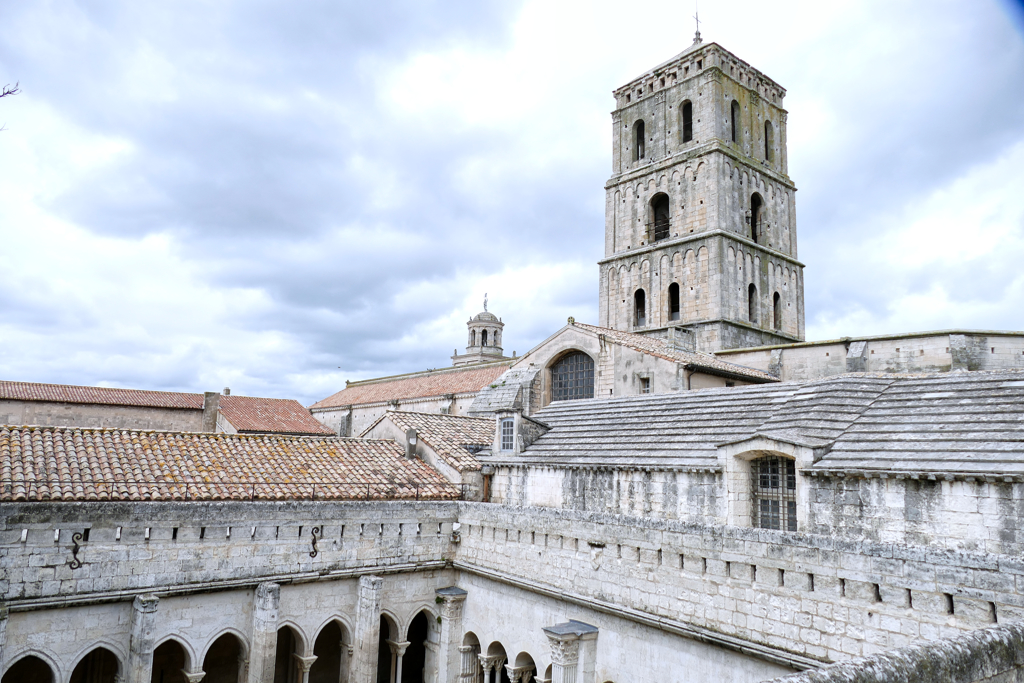
Immediately adjacent to the church is the beautiful cloister of a Benedictine monastery. The northern and eastern parts are Romanesque and were built between 1160 and 1180, while the western and southern parts were only added in the Gothic style in the 14th and 15th centuries.
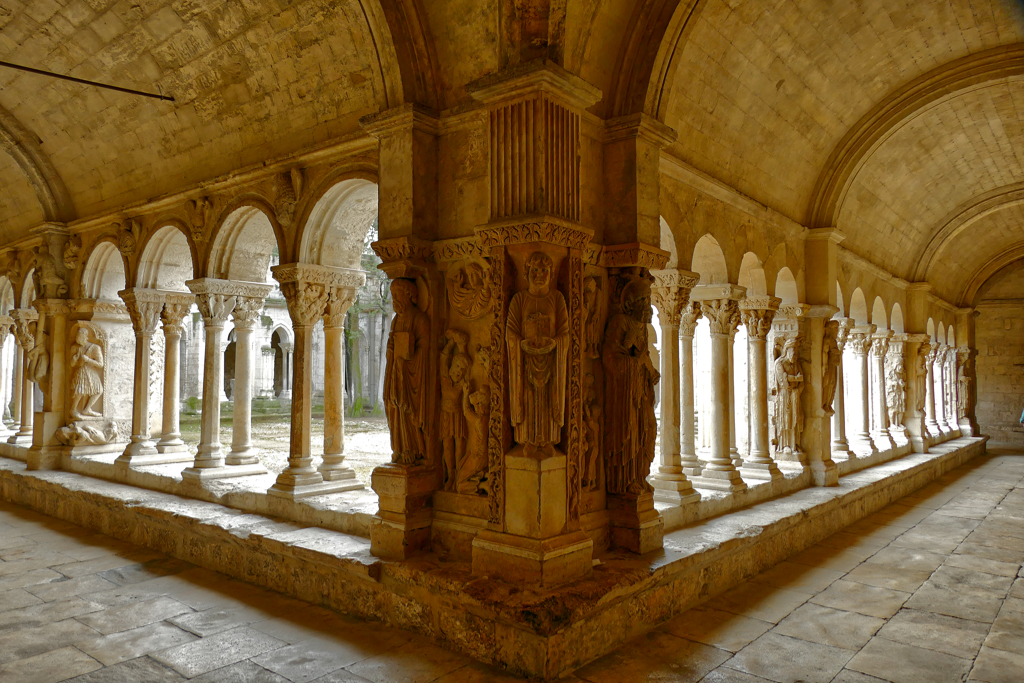
Saint Trophime is open every day from 9 a.m. until noon and then again from 2 p.m. to 6 p.m. and the visit is free of charge. To visit the cloister, however, a general entrance fee of 6 €uros applies. It is open every day from 9 a.m. to 7 p.m.
My Tip
After you walked up and down the streets of Arles and saw quite a lot, you probably need a break and you deserve it. One of the most beautiful places for a snack is the Épicerie of Le Cloître. It is a small and extremely charming restaurant where you can enjoy freshly prepared food in a very relaxed atmosphere – either in the lovingly furnished dining room or in the shade of a humongous paulownia tree in the forecourt. And for those who want to stay overnight in a unique setting, the associated hotel Le Cloître offers beautiful rooms.
Place de la République
Located south of the ancient Roman Forum, the Place de la République is a reflection of the everchanging development of the city through the historical eras and the beating heart of Arles.
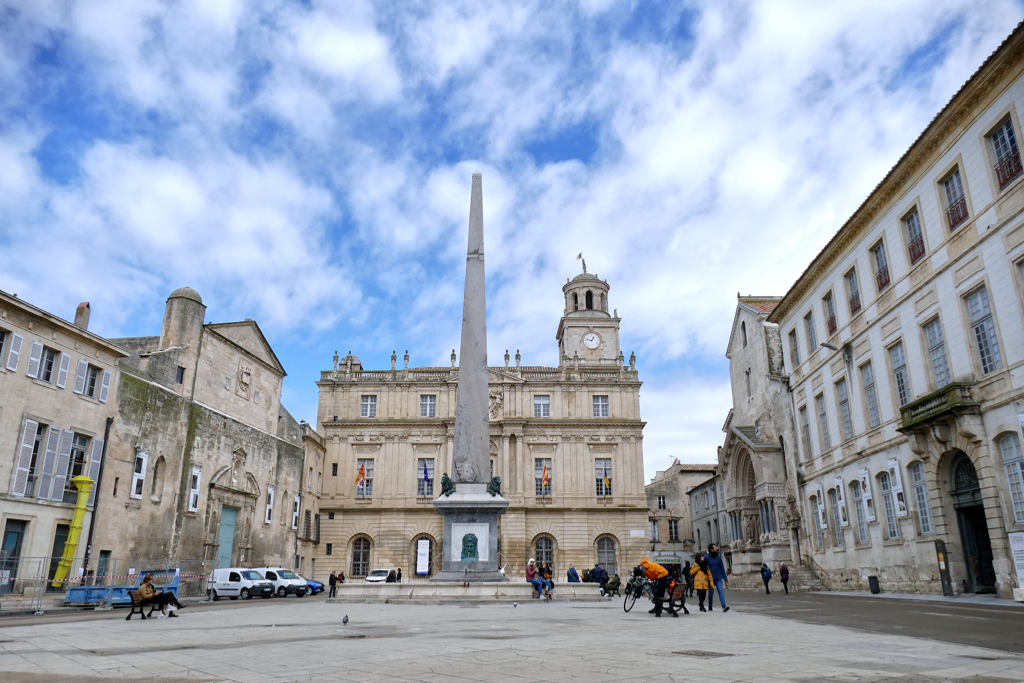
In the Middle Ages, there were several residential blocks in the current area which left only a narrow space between the Saint Trophime Cathedral and the Church of Sainte Anne. Those houses of worship are facing each other. However, after the French Revolution, Sainte Anne, also known as Notre-Dame-la-Principale, housed the city’s lapidary museum, and it serves as an exhibition venue to this date.
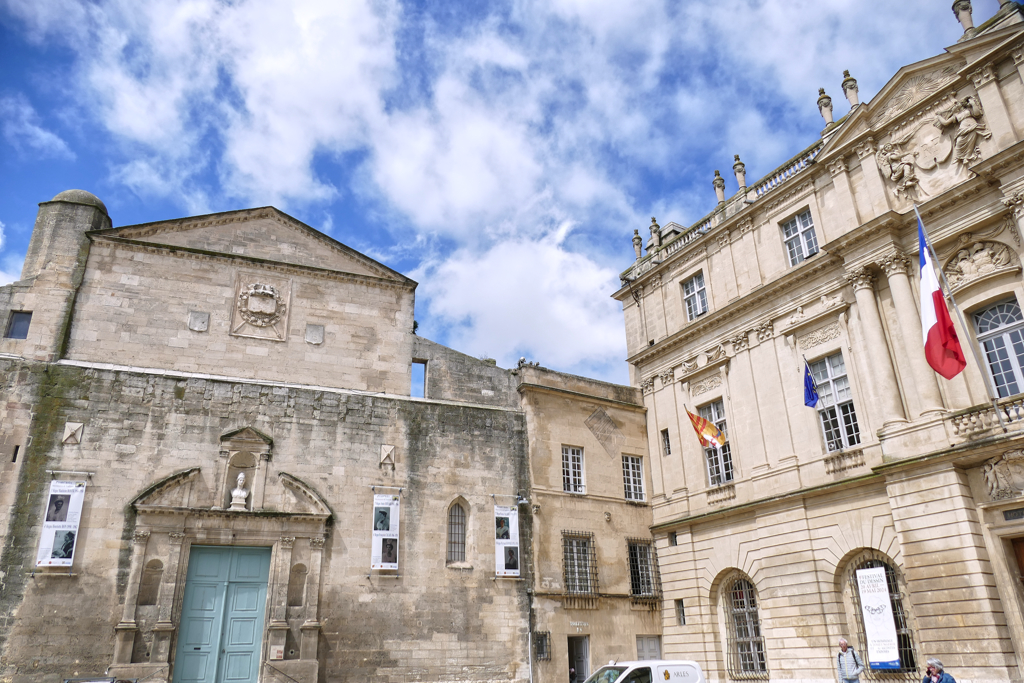
The square was fundamentally changed, especially by the construction of the town hall in the 17th century.
Over time, monuments of different styles and functions were added. As a result, it now forms an unusual ensemble of architecturally very different buildings.
Its large area makes it ideal for meetings and celebrations, as well as traditional events such as the election of the Queen of Arles, which takes place every three years.
Place de la Major
For a relatively small city, Arles has a considerable number of houses of worship. One of the most important is L’église Notre Dame la Major on the eponymous square east of the Amphitheater.
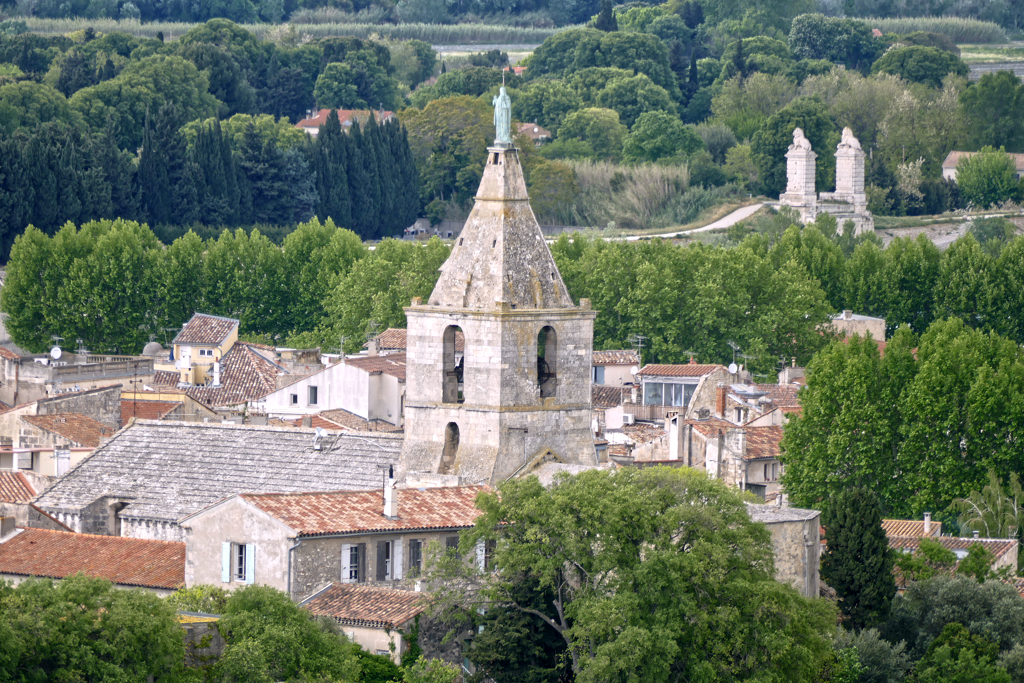
It was the seat of the largest parish in the city and is one of the oldest churches in Arles. In fact, the original building was consecrated way back in 452 during the third council of Arles. This is very impressive, however, another valid reason you should absolutely visit this church is its location at the northern end of Hauture Hill from where you have amazing views.
The Arles of Vincent van Gogh
During the 15 months Vincent van Gogh spent in Arles, he created more than 300 drawings and some of his most famous paintings such as the legendary The Night Café. As a matter of fact, the café was even remodeled in the 1990s to match his painting. Today, however, it is closed for good.
Fondation Vincent van Gogh
“But haven’t you been to Amsterdam”, asks Philippe. “There you have it. Why do you want to waste time with Vincent van Gogh in Arles? There are far more interesting things to see in the city.”
Well, yes, I have been to Amsterdam, and no, following in the footsteps of van Gogh is not a waste of time.
As you might have guessed, Philippe is French, lives not very far from Arles, and is in town every year for the photography festival. Hence, it’s easy for him to talk.
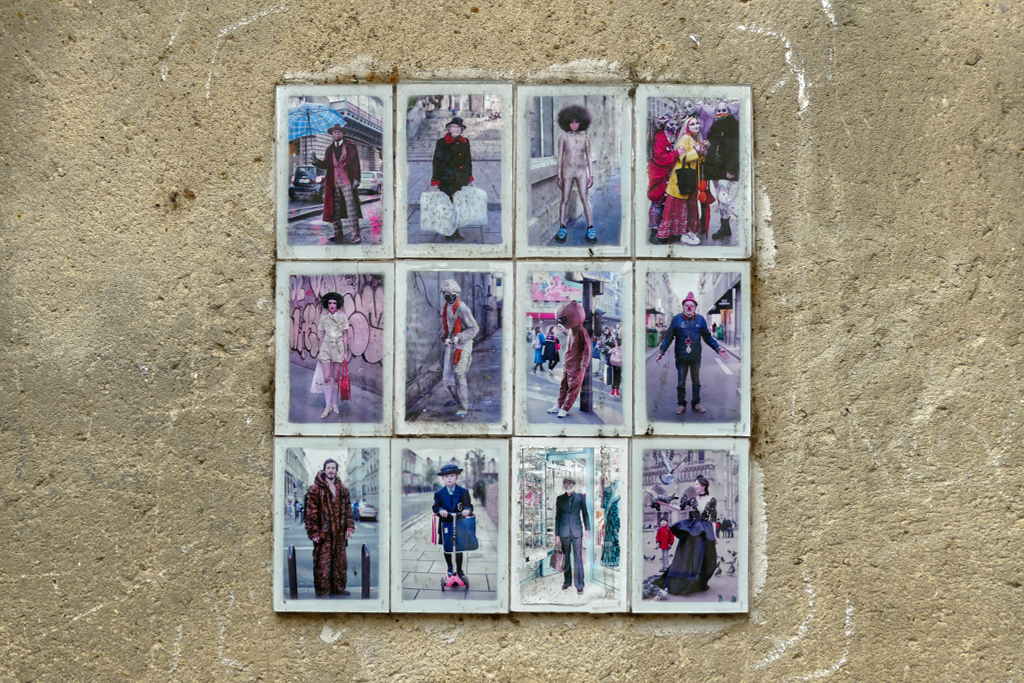
For us novices, van Gogh’s traces around the city are simply mesmerizing.
There’s just something special about going to the places where the painter once stood to capture the beauty of the city in the pictures that everyone knows. Yes, through Vincent’s pictures, millions of people know the city of Arles without ever having been there.
So far so good. But I have to admit that Philippe is right when it comes to the Foundation.
On a Mission
The Foundation’s mission is to dedicate itself to the work and legacy of Vincent van Gogh.
But what does that mean?
In any case, it does not mean that a large exhibition of works is being shown here.
As I stand at the box office, the nice lady informs me that there will be two pictures by van Gogh on display.
Two.
I would argue that every reasonably well-stocked art museum in the world has more than two paintings by van Gogh hanging. Not to mention the Van Gogh Museum in Amsterdam.
As a matter of fact, the Foundation’s mission is to promote cultural and artistic activities related to the painter’s work. A rather vague definition that leaves a lot of room for interpretation. In any case, the collection primarily consists of works executed by more than ninety contemporary artists in tribute to van Gogh.
In tribute to my friend Philippe, I forgo the visit and instead go back to Rue Gambetta where the former Hôtel-Dieu-Saint-Espirit is located.
L’Epace Van Gogh
Although not a single one of his wonderful pictures can be seen in the Hôtel-Dieu-Saint-Espirit, today called Espace Van Gogh, the venue is much more touching than the Foundation. Ultimately, the building is inextricably linked to the person van Gogh and the demons with which he had to struggle.
Since there were 32 charitable institutions in the city at the beginning of the 16th century, the archbishop decided to combine them all into a single site. For this purpose, the so-called Hôtel-Dieu-Saint-Espirit was built in the 16th and 17th centuries. Thanks to donations from wealthy patrons, the house was able to accommodate all those in need. From 1664 onwards, nuns from the Augustinian Order looked after the patients.
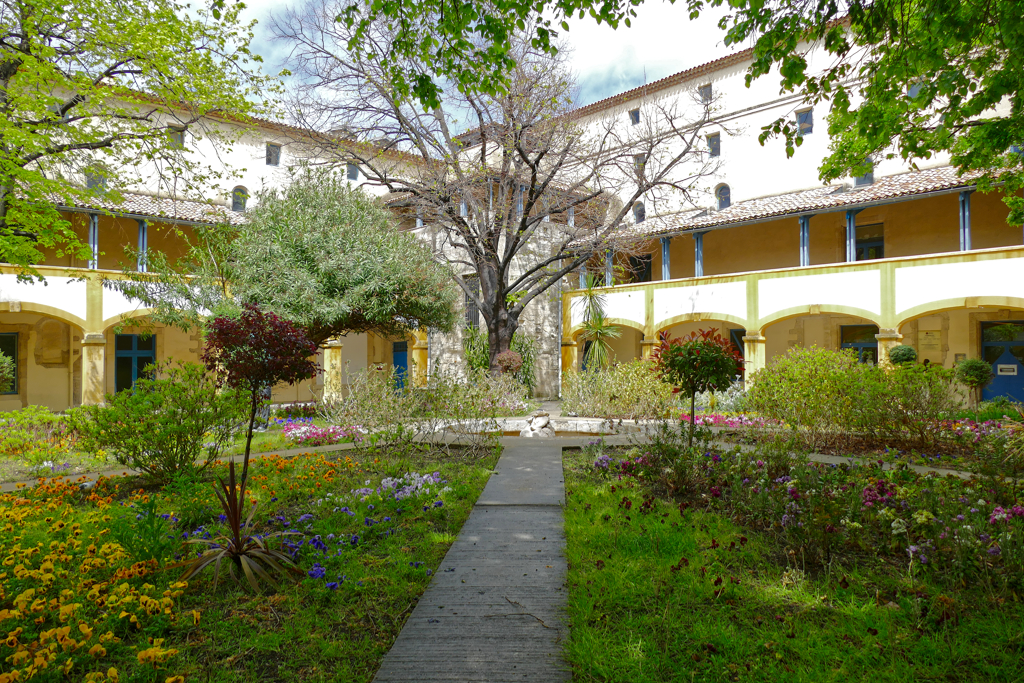
In 1974 a new, modern hospital was opened in Arles. Therefore, the old hospital was completely evacuated within twelve years. The building was then converted into a cultural center. During the renovation, great emphasis was placed on preserving historical elements such as the Roman esplanade. Today the building houses several institutions and, on the ground floor, small specialty shops selling local souvenirs.
Sufferance for Sanity
During his stay in Arles, van Gogh’s mental health deteriorated alarmingly. After eventually cutting off part of his left ear, he was admitted to the Hôtel-Dieu-Saint-Espirit. Although he did return to his famous Yellow House eventually, he spent months going back and forth between hospital and home, suffering from hallucinations and delusions. That same year, following a petition from 30 townspeople, the police closed the house of whom the villagers referred to as the fou roux, which charmingly translates to the ginger madman. Van Gogh moved into the chambers of his medic Dr. Felix Rey. Finally, he left Arles in May 1889, voluntarily seeking help at the Saint-Paul sanatorium in Saint-Rémy-de-Provence.
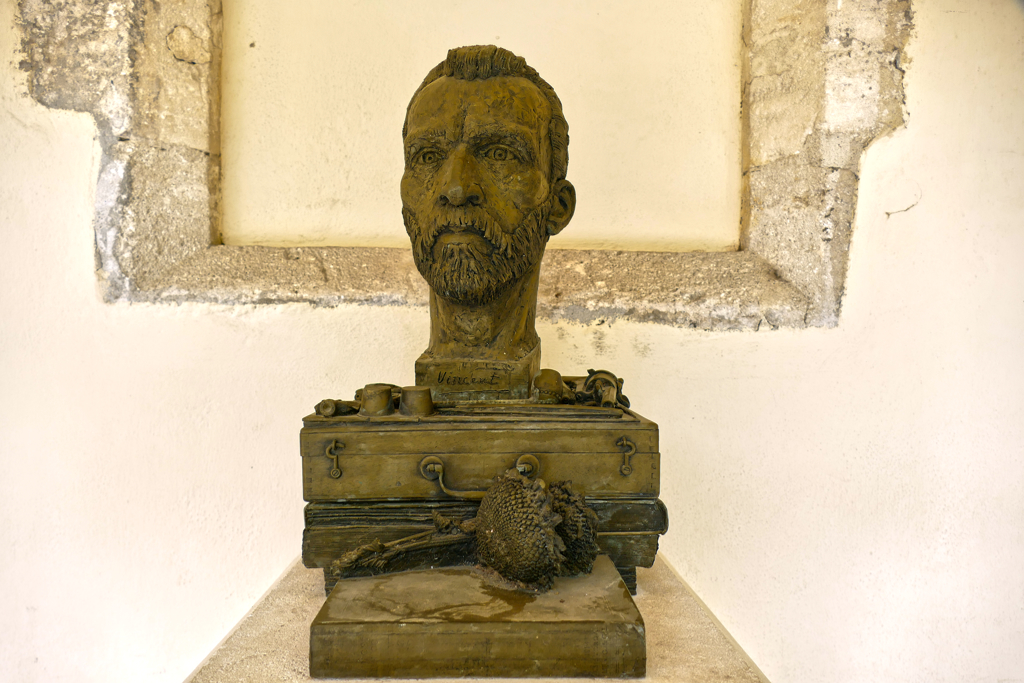
Nevertheless, the Hôtel-Dieu-Saint-Espirit became the main motif of two of van Gogh’s paintings. One shows the courtyard between four tracts of the building and is called The Garden of the Hospital in Arles. The other is called Dormitory in the Hospital in Arles and shows a ward at the hospital. Also, van Gogh portrayed his physician Dr. Felix Rey.
The Fondation Van Gogh is open every day from 10 a.m. to 6 p.m. and the general entrance fee is 10 €uros. In contrast, the Espace Van Gogh can be visited free of charge, albeit, there might be an admission fee for special exhibitions. The complex remains open from 7 a.m. to 7 p.m.
The Arles of Today
Yes, the number of ancient buildings in Arles is absolutely impressive. In comparison, even the impressionists’ stays in the 19th century seem almost as if they were yesterday. There are a lot of historical things to see.

However, it would be a mistake and a great loss to disregard Arles’ contemporary cultural offerings. I already mentioned above that my friend Philippe comes to the city every year for the famous Les Rencontres d’Arles, the mother of all photography festivals. And also during my stay, the second edition of a major art festival took place, namely the Festival du Dessin, where the best of the best draftsmen, graphic artists, illustrators, and caricaturists are presented for one month in many places in the city. Just like during the biennial in Venice, this is also a great opportunity to visit buildings and spaces that are usually not easily accessible to everyone.
While the events mentioned are temporary, Arles has enjoyed a permanent cultural institution since 2013. With the Luma Arles, Maja Hoffmann’s Luma Foundation has created an artistic cultural complex. The center is intended to be a think tank and create synergies for culture and ecology. Architecture, art, research, and environmental protection are closely linked. Artists, curators, and scientists can work together on an interdisciplinary basis here.
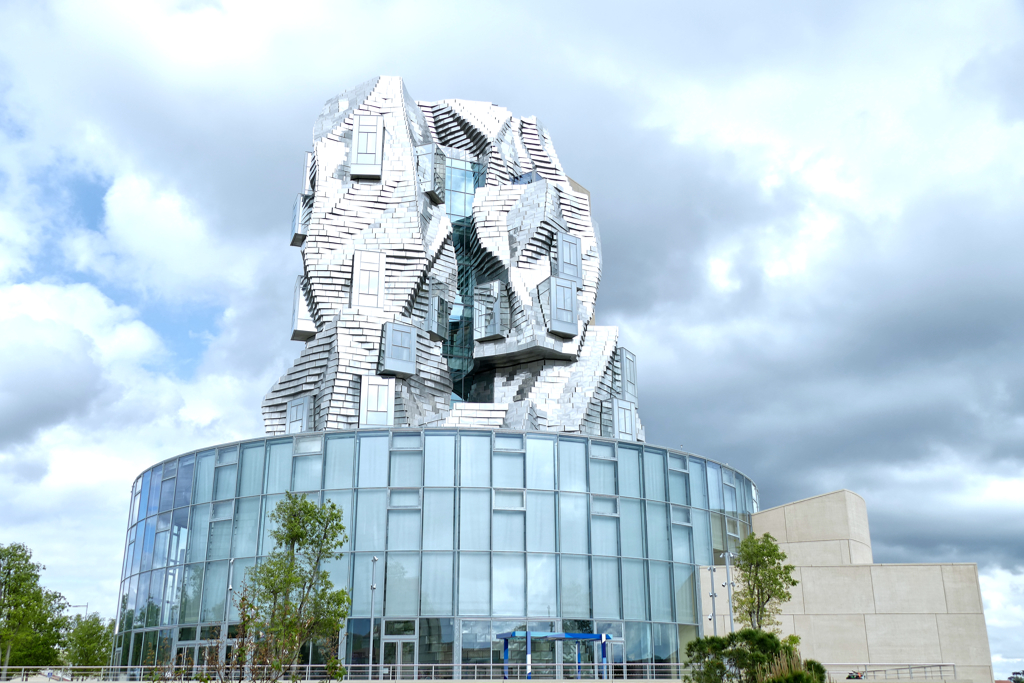
And the visitors? They have the great pleasure of strolling through a beautiful garden and seeing great art in disused industrial buildings.
LUMA Parc des Ateliers
The complex consists of six historic industrial halls on land belonging to the national railway company SNFC that has been unused for decades. The Swiss billionaire and art patron Maja Hoffmann acquired it in 2010 for her Luma Foundation.
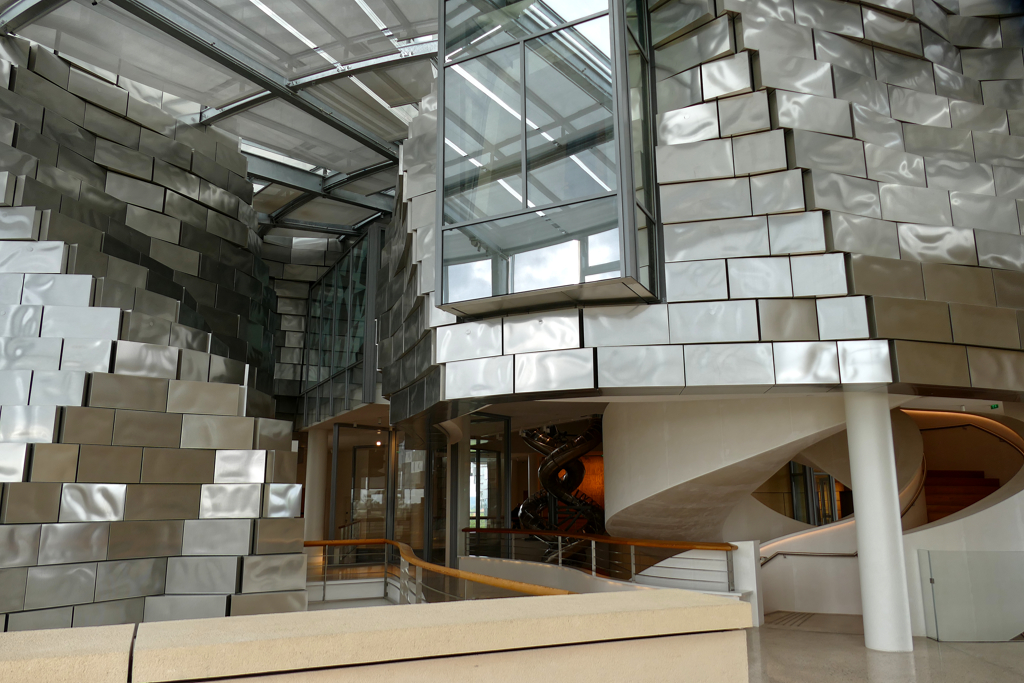
The highlight in the true sense of the word is a tower that can be seen from afar. None other than Frank Gehry designed the 56-meter-high construction. The base of the tower is a circular glass structure that cleverly pays homage to the Roman amphitheater. The jagged shapes in the upper area are covered with 11,000 stainless steel diamonds. Due to their tilted arrangement, they reflect the light in different color nuances depending on the time of day and reflection angle.
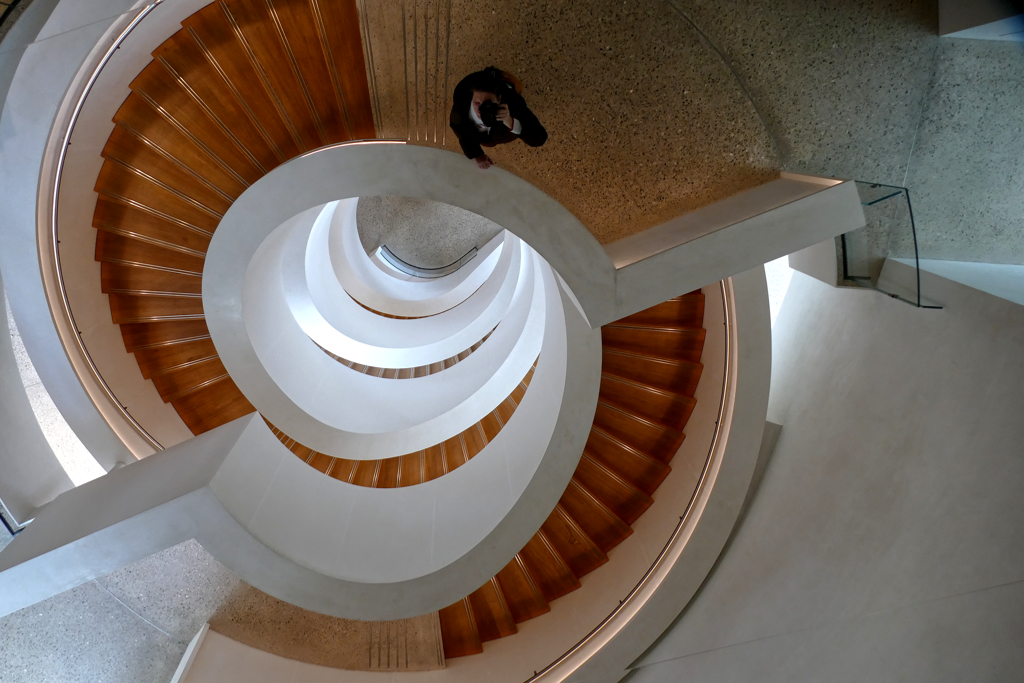
Inside, the famous Danish artist Ólafur Elíasson designed a double spiral staircase crowned by rotating ceiling mirrors, creating fascinating effects.
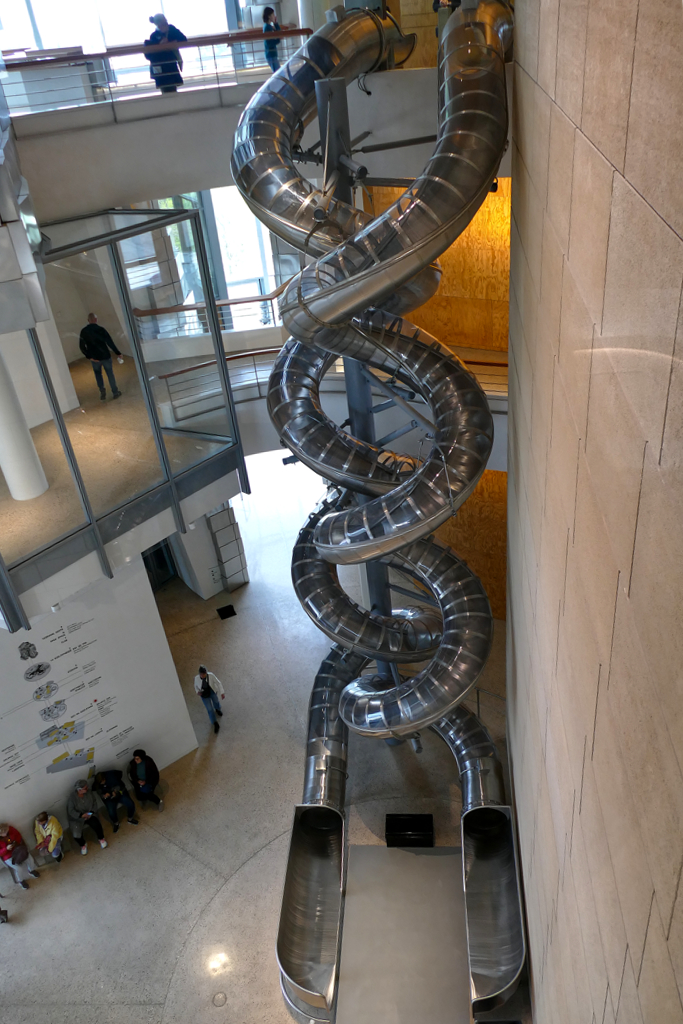
If you’re too tired to take the stairs, you can slide down the floors using a metal slide designed by German artist Carsten Höller.
While the park is open every day from 7.00 a.m. to 8.30 p.m., you can visit the Gehry’s tower only from Wednesday to Sunday between 10 a.m. and 6 p.m. Although visits are free of charge, reservation is recommended.
More Museums
While the LUMA Parc des Ateliers is definitely the highlight when it comes to exhibition spaces, Arles has some inspiring museums such as the archeological Musée de l’Arles et de la Provence antiques which traces the history of the settlement of Arles and its surroundings from prehistory to the end of Roman times. In contrast, it is housed in a very modern building designed by the Peruvian architect Henri Ciriani and completed in 1995.
Also, there is the Museon Arlaten dedicated to the ethnography of Provence, and last but not least the Musée Réattu which showcases the work of local artist Jaques Réattu alongside modern and contemporary art. Together with the Musée de la Camargue which is located about ten kilometers southwest of the city center, these three museums are included in the Pass Monuments Avantage* that I’m introducing below.
Note
I have stated the opening hours in this post as they were at the time of my stay. I would like to remind you that times can vary seasonally by up to an hour and a half. So to avoid disappointment, check what opening times will apply during your trip. Online, that’s a piece of cake.
Practical Information
How to Get There
By Plane
The nearest international airport is Nîmes-Arles-Camargue Airport at Garons, approximately 25 kilometers northwest of the city center.
The cheapest way to get to Arles from the airport is by taking a shuttle bus to the city center of Nîmes. From there, many buses as well as regional trains are going to Arles every day.
Alternatively, you can get to Arles by plane via Marseille-Provence Airport. It is located about 65 kilometers southeast. To get to Arles, you first need to take bus #13 from the airport’s Gare Routière to the train station Vitrolles. From there, take one of the regional trains whose number starts with TER. A general single trip costs 14.50 €uros and the ride takes about 45 minutes.
By Train
From Arles, there are train connections to Avignon, Nîmes, Marseille, Paris, Bordeaux, and numerous other places. You can get information and book tickets online on the website of the national train company SNCF.
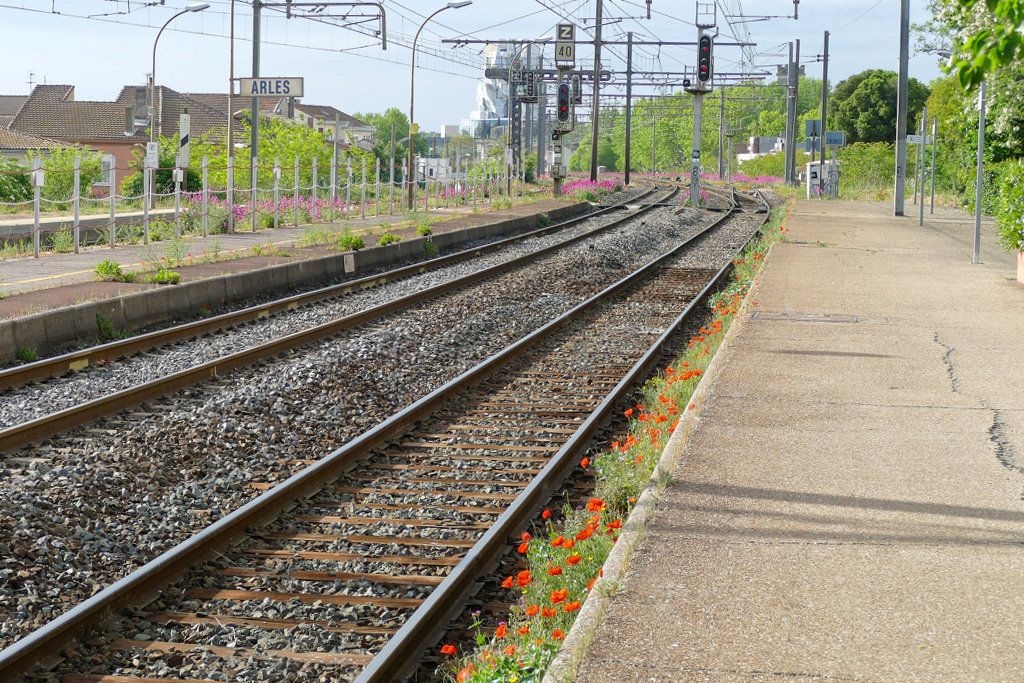
Obviously, you can also buy your ticket at the station right before departure. However, I would only recommend this for short distances and travel on regional trains. Travelling by public transportation is very popular in France so trains tend to be either very full or, when a reservation is compulsory, even sold out.
Buying a ticket from a machine for the first time can be quite an adventure, especially if you’re a first-timer. That’s why I’m explaining the necessary steps in my post France – An Easy Circle Trip to the Five Best Cities to Visit in Provence and I really urge you to check it out. You’ll see, buying a ticket is actually not that complicated – once you know how to do it.
By Bus
Travelling by bus is getting really popular in Europe and can actually be the more convenient option in the Provence region. However, Arles is rather excluded from this club. While there are bus connections to various towns in the vicinity, there aren’t any long-distance buses. Nevertheless, you can go to Nîmes by coach as well as to Salon de Provence where you’ll find connections to Marseille.
The bus terminal is located on Avenue Paulin Talabot right in front of the train station.
My Tip
There is no luggage storage at the station, however, next to the bus station is the bike rental Taco & Co. For 5 €uros, they keep your bags during their opening hours from 8.30 a.m. to 7 p.m.
How to Get Around
The city center of Arles is quite small and can easily be explored by walking. However, keep in mind that Arles is an old city with charming yet uncomfortable cobblestone streets and alleys. Also, you’ll probably walk a lot and possibly climb some ancient Roman rocks, hence, make sure to wear sensible shoes, preferably sneakers.
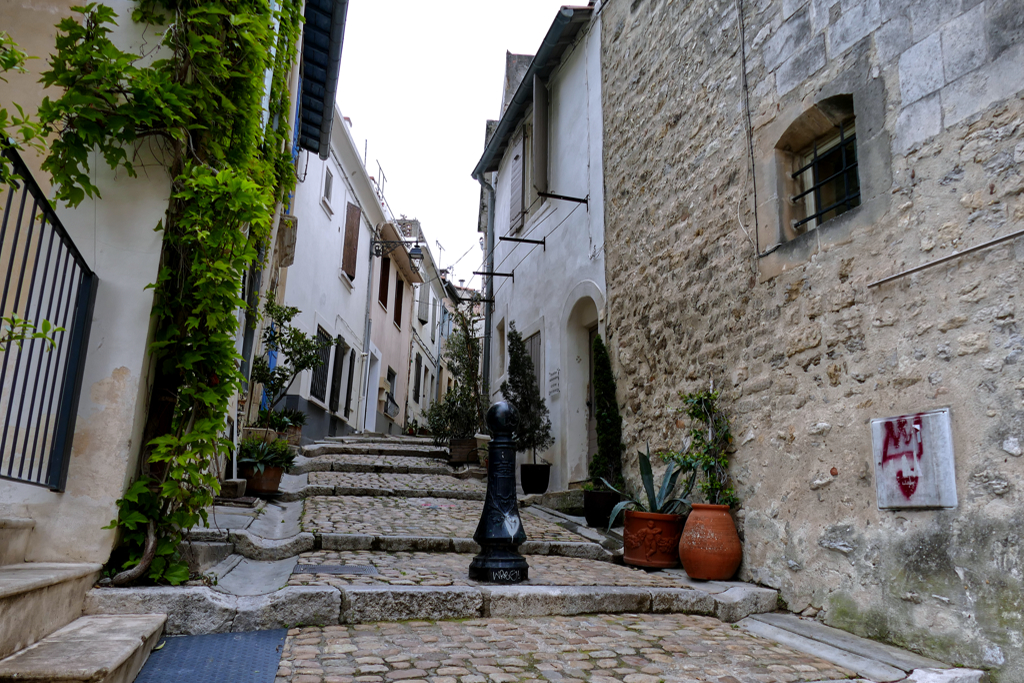
Only if you want to visit places like the Pont Langlois which today goes by the name Pont Van Gogh even though it isn’t the original bridge from Vincent’s paintings, you’ll probably need to use public transport.
Local bus tickets are incredibly cheap: For one €uro, you can travel for one hour as much as you please! You can even buy a pass with ten trips for as little as 8 €uros. I would assume this is one of the cheapest public transport systems in Europe.
To check your route and connections, just use Google Maps. The App even informs you when the bus is late. However, on weekdays, buses are going every ten to twenty minutes. On weekends, there are fewer connections, obviously.
Tour de France Arles
Theoretically, renting a city bike is a valid option. Nevertheless, keep in mind that Arles is quite hilly, streets are narrow, and visitors are mindlessly meandering all over the place. Therefore, cycling in the very city center might be rather a drag than a joy.
This being said, it is definitely wonderful to explore the city’s rural surroundings by bike. Also, a bike tour along the river Rhône is absolutely wonderful.
There are no city bikes in Arles like in larger cities. But don’t worry, several private providers rent bikes at fair prices. One of them, for example, is the Taco & Co. mentioned above right at the train station. You can find an overview including all relevant information on this website.
Where to Stay
One of the great advantages of French centralism is that also those totally preposterous prices stay in the capital. As soon as you leave Paris, things get significantly cheaper and this applies to accommodation, too.
It’s an easy equation: Of the three aspects of a good standard, convenient location, and affordable price, you always have to waive one. If you find a good standard hotel in a convenient location, it won’t be at an affordable price. A hotel in a convenient location at an affordable price won’t have a good standard. And finally, a good hotel at an affordable price won’t be in a convenient location.
I opted for the last option which brought me to the neighborhood of Fourchon. Especially in a small city like Arles, staying on the city center’s outskirts usually equals just a couple of minutes of commuting. In fact, bus #2 took me from the Ibis Hotel* to the very center in only ten minutes.
However, you can choose lodging options that suit your personal needs – and your budget, obviously, on this map*:
What to Eat
French cuisine is famous all over the world for a reason. In fact, food is an important part of daily life in France and regional cuisines and customs are a cherished part of the national culture. UNESCO recognized France’s efforts and designated the country’s national cuisine as an intangible cultural heritage in 2010.
French dishes are famed for their sophistication and versatility and, most importantly, the high quality of the ingredients used. Of course, each region has its own specialties, but they are often popular throughout the country. The most famous dishes come from Normandy, Brittany, Burgundy, and the Provence region, obviously.
In addition to delicious wine and crispy baked goods, more than 700 types of cheese are particularly noteworthy! In fact, the French don’t just slap cheese on a sandwich. They also use it a lot for cooking, gratinating, or as a filling.
What’s Special?
There are plenty of local specialties to discover in Arles such as various beef ragouts like Agriade, Broufade, and Fricot des Barques.
Unfortunately, food in France is not cheap. Delicious snacks at reasonable prices are often available in bakeries and rotisseries as well as in eateries at farmers’ markets and in covered market halls. In general, lunch menus and daily specials, so-called plat du jour, are comparatively affordably priced.
Also, if your accommodation offers breakfast at a halfway reasonable price, take it. Albeit, you can always grab a croissant and a café au lait at many bakeries. However, since at your hotel’s breakfast buffet, you can take as much coffee and salty and sweet pastries as you like, you will probably get a better deal at the hotel as long as the amount doesn’t exceed let’s say 12 €uros. And don’t worry, the pastries will be just as fresh and crispy and delicious as in a bakery: They are the pride of the French, hence, no one is fooling around with baked goods in France!
Cash, Cards, and Deals
Since 2001, 20 European countries have paid with €uros, and France is one of them, obviously. The exchange rate is 1 US$ = 0,85 EUR as of May 2025, but you can check the conversion on this page.
Also, you can pay with credit cards basically everywhere.
Although Arles is not the country’s most expensive city, if you want to visit some of the outstanding monuments and amazing museums, it quickly adds up. Fortunately, there are various city passes to choose from. The two best and most popular are the Pass Monuments Avantage* for 19 €uro and the Pass Monuments Liberté* for 15 €uro.
The Pass Monuments Avantage* grants access to six monuments and four museums. You can visit each site once over the course of six months. Also, a parent can be accompanied by one child or teenager under 18 free of charge. Since the Fondation Van Gogh is operated privately, it is not included, nevertheless, you get a small discount.
In contrast, the Pass Monuments Liberté* is valid only for one month and grants access to four of the historic monuments of your choice. All the other rules of the Pass Monuments Avantage* apply.
Visiting Organized
Although I’m an avid solo-travelling woman, I sometimes like to join organized tours. This way, I get extended info about a place and it’s fun to visit landmarks in the company of like-minded fellow travellers.
Especially in summer when the lavender is in full bloom in the Provence region or during the annual photo festival Les Rencontres Photographiques, popular places in Arles can get quite busy. Therefore, booking tickets’n’tour ahead is certainly a good idea**:
Connection and Communication
Since June 2017, no roaming charges have applied within the EU with a European mobile phone contract, This applies in all 27 countries of the European Union as well as in Iceland, Liechtenstein, and Norway and to all contracts.
In case European roaming is unavailable, you can connect to the internet without any issue at basically every museum, eatery, café, and, of course, hotel.

If you insist on being online 24/7, you can get a SIM card, obviously. There are prepaid SIM cards by many companies. At 2.99 €uros, Orange France distributes the cheapest one. Other brands are SFR France, Bouygues Telecom, and Free Mobile. They cost 10 €uros. Keep in mind that some companies might also charge an activation fee.
In France, they use plug types C and E. Their voltage is 230 V and the frequency 50 Hz. Whereby, as nowadays, all these chargers have integrated adapters, in general, the voltage and frequency don’t really matter.
By the way, you’ll find this information and many more comprehensive travel tips in my post World’s Most Complete Travel Information – an indispensable globetrotter-classic.
Language
Arles’ most famous visitor, Vincent van Gogh, studied English, German, and French at Jan Provily’s boarding school in the Dutch city of Zevenbergen. As a result, he was able to communicate well with the locals.
And what about your knowledge of French?
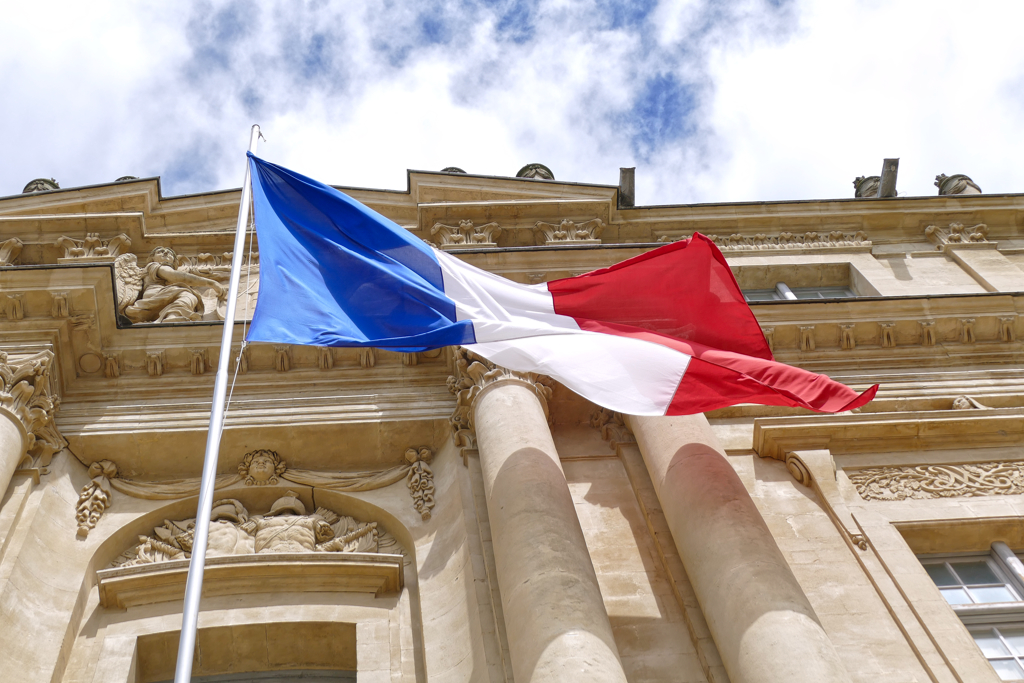
Because although the French are famous for many great things, speaking foreign languages is not one of those. While in über-touristy Paris, things seem to get a bit better, in the Provence region, people have rudimentary knowledge of English at most. And while they still might understand more or less what you are saying, they might not be able or willing to answer in English.
Therefore, already out of respect, it won’t hurt to learn at least some polite phrases with the help of babbel or Lingohut, for example.
Map
This map should help you to find all the wonderful places I’m introducing in this post. Clicking on the slider symbol at the top left or the full-screen icon at the top right will display the whole map, including the legend:
Arles was only the first of five amazing cities I visited during my circle trip through the Provence. To read about the others, go to the post France – An Easy Circle Trip to the Five Best Cities to Visit in Provence and take your pick! There, you’ll also find further valuable general information that will make your own trip much smoother and more enjoyable.
Pinnable Pictures
If you choose to pin this post for later, please use one of these pictures:
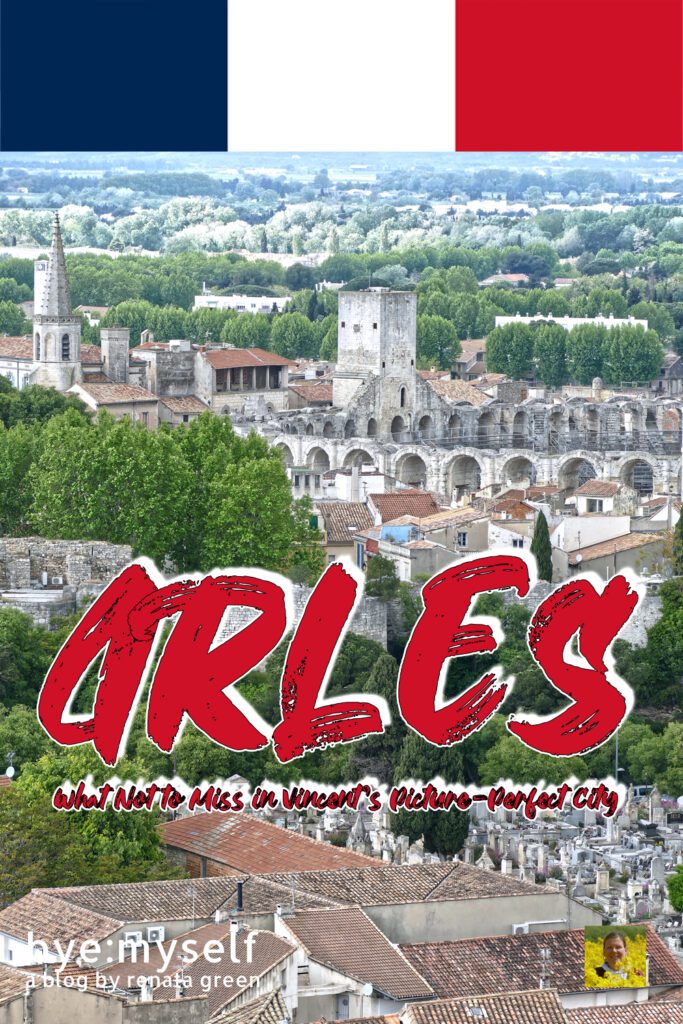
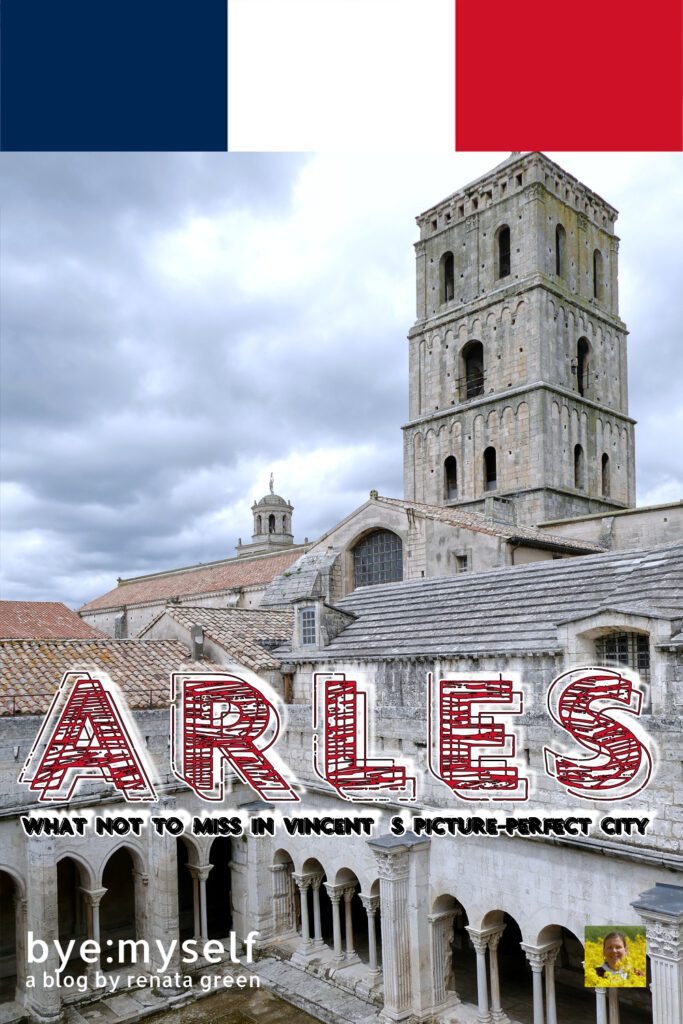
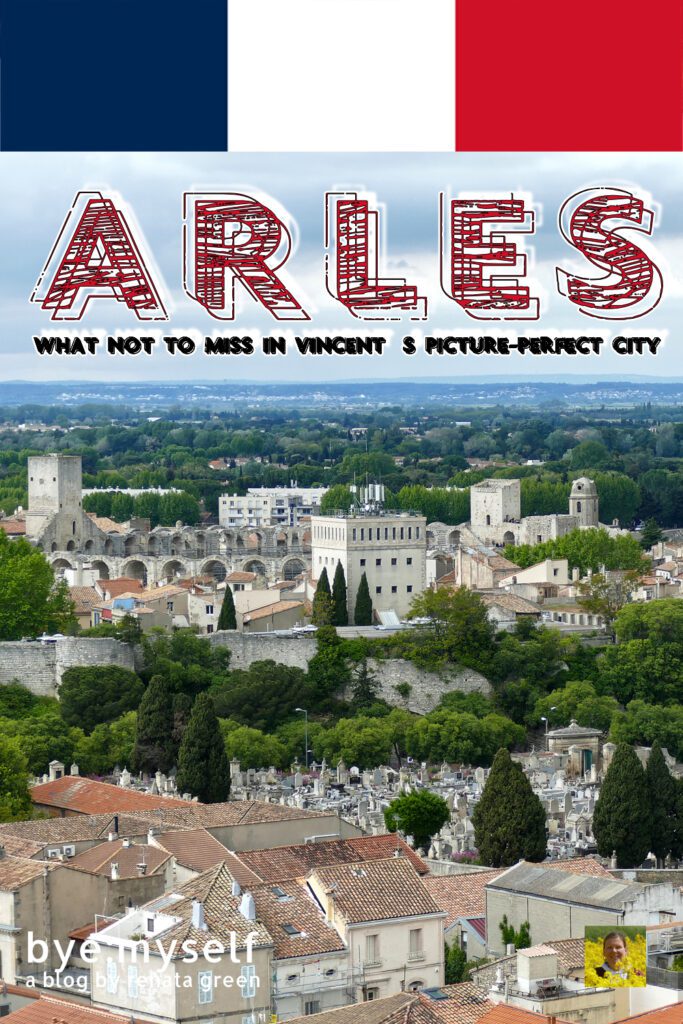
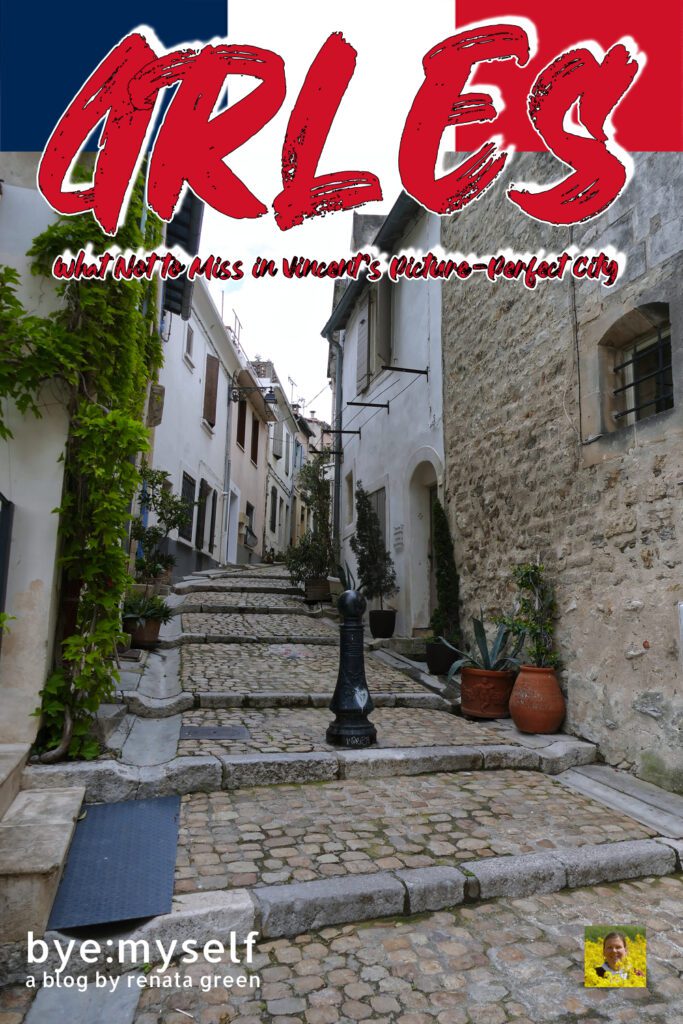
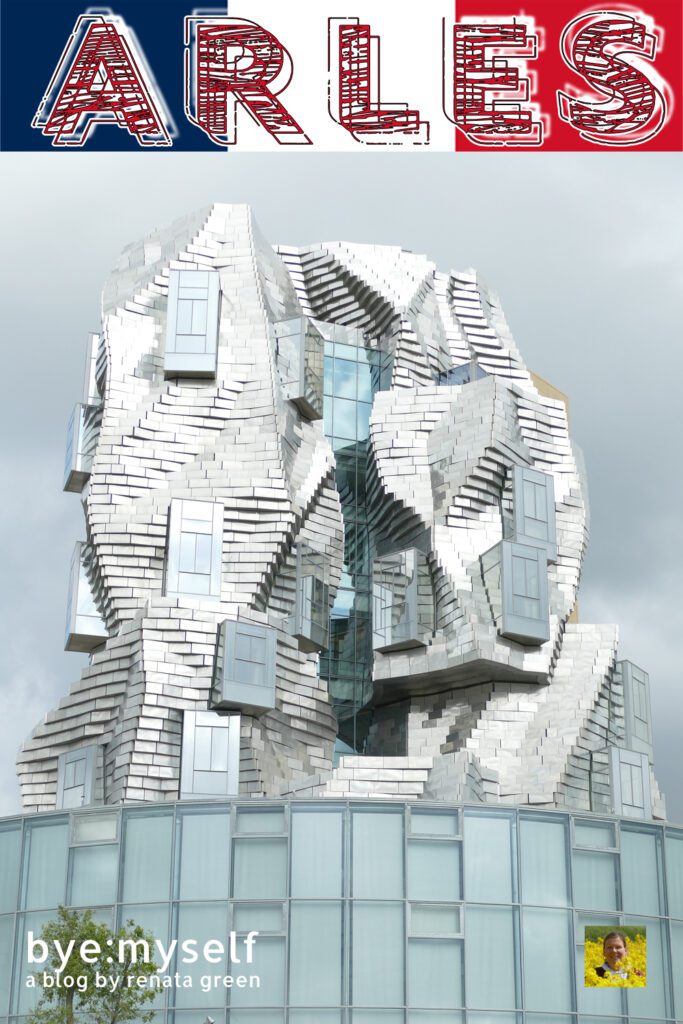
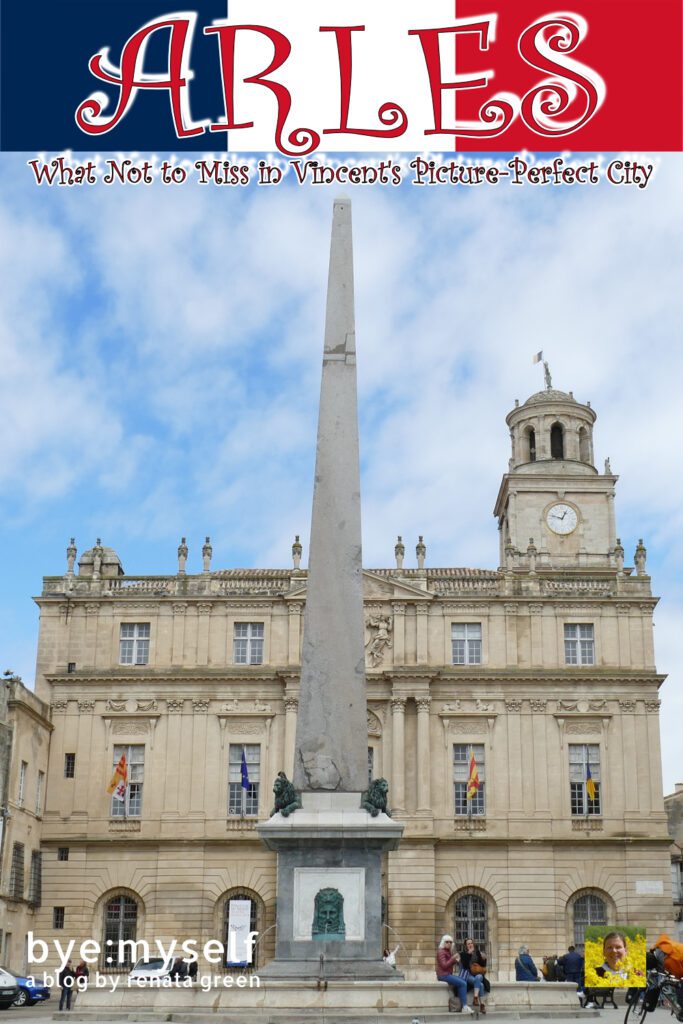
Note: I am completing, editing, and updating this post regularly – last in May 2025.
Did You Enjoy This Post? Then You Might Like Also These:
MAGNIFICENT MARTINIQUE: Ten Places Not to Miss on Your Visit (even when exploring by public bus)
One Day in ARLES – What Not to Miss in Vincent’s Picture-Perfect City
PARIS for Free!
The Best Beaches in Martinique You Can Easily Visit by Public Bus
Best Street Art in GUADELOUPE
Perfect Guide For a Day Trip to SAINT-EMILION
24 hours in BORDEAUX
The Best Beaches in Guadeloupe You Can Easily Visit by Public Bus
Deisclaimer: I am very appreciative that L’Office de Tourisme d’Arles supplied me with a complimentary Pass Monuments Avantage. Nevertheless, the description of these activities and all opinions on their services are mine and were in no way influenced by my cooperation partner.
* This is an affiliate link. Hence, If you book through this page, not only do you get the best deal. I also get a small commission that helps me run this blog. Thank you so much for supporting me!

